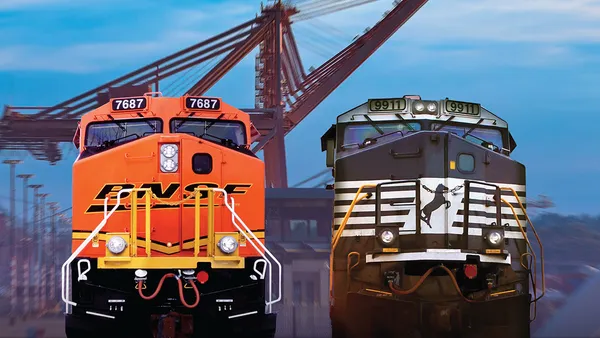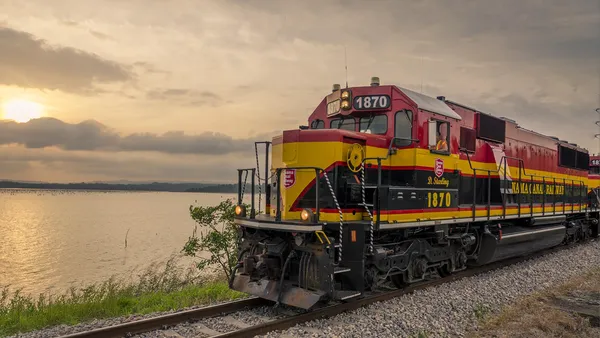Dive Brief:
- U.S. railroads originated 1.02 million carloads and 1.08 million intermodal units in June, representing a 6.3% year-over-year (YoY) drop in combined volume, according to the Association of American Railroads. Intermodal volumes posted the biggest decrease, down 7.2% from last year — the sixth straight month of decline.
- Railroad volumes have been shakier in 2019 than 2018 after a tumultuous winter plagued by flooding in the Midwest and trade uncertainty as tariff threats come and go. But AAR Senior Vice President John T. Gray said a weakening economy is starting to reveal itself in slowing rail service demand.
- "Manufacturing is responsible for much of the rail traffic base, but U.S. manufacturing output has been falling for several months. Housing too is in the doldrums, and trade is suffering because of tensions with trading partners overseas. Taken together, demand for rail service just isn’t as strong as it was six months or a year ago," Gray said in a statement.
Dive Insight:
Now that summer is well underway and trade tumult has become the status quo, what's left for an explanation of continuing slowdown on the rails is the economy.
The Institute for Supply Management manufacturing index fell from 52.1 in May to 51.7 in June‚ a 0.4% decline. And in the first negative showing in recent years, ISM's New Orders Index fell even sharper by 2.7% from 52.7 in May to 50 in June, suggesting a possibility of further future decline.
"Customer demand did not expand for the first time since December 2015, when the index registered 49.6 percent," ISM Chair Timothy Fiore said in a statement. Apparel, leather, primary metals, wood products, transportation equipment, machinery and fabricated metal products all posted new order declines in June, according to ISM.
Coal, crushed stone and gravel, and grain were all down in terms of rail carloads. Total carloads for the first 26 weeks of the year were down 3.1% compared to the same period last year.














